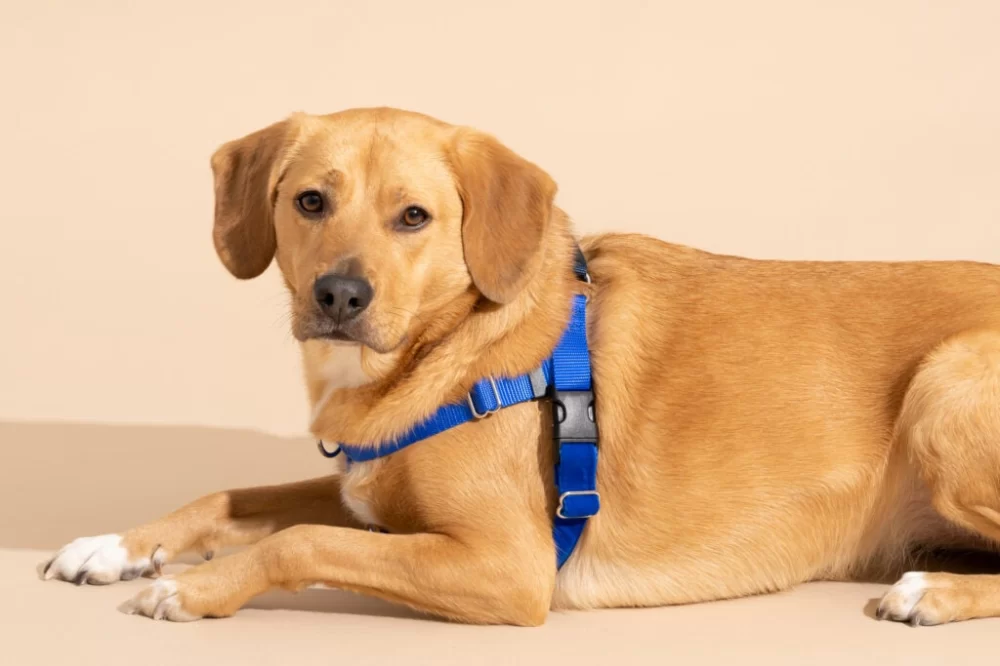- Importance of Choosing the Right Harness for Puppy Training
- Features to Look for in the Best Puppy Training Harnesses
- Types of Harnesses and Their Benefits
- Real-Life Example of Effective Harness Training
- Where to Find Quality Harnesses and Support
1. Importance of Choosing the Right Harness for Puppy Training
Training a puppy is both an exciting and challenging journey, and selecting the best dog harnesses for training puppies can significantly influence the outcome. Unlike collars, which place pressure on a puppy’s neck, harnesses distribute force more evenly, reducing risk of injury and discomfort. This is especially important for young puppies with delicate developing bodies.
A well-designed harness not only improves your control during walks and training sessions but also enhances the puppy’s comfort and willingness to cooperate. When puppies feel secure and comfortable, they are more likely to respond positively to training cues, making the process smoother for both pet and owner.

286 Wilmington West Chester Pike, Chadds Ford, PA 19317, USA
See Details2. Features to Look for in the Best Puppy Training Harnesses
2.1 Adjustable Fit for Growing Puppies
Puppies grow quickly, so a harness that offers adjustable straps ensures a snug, comfortable fit over time. Look for harnesses with multiple adjustment points around the chest and neck to accommodate growth spurts without causing chafing or restriction.
2.2 Durable and Lightweight Materials
Materials should be strong enough to withstand energetic puppies yet lightweight to avoid adding unnecessary bulk. Breathable fabrics help prevent overheating, while sturdy buckles and fasteners ensure safety during active play or training.
2.3 Easy to Put On and Take Off
Simplicity in design encourages consistent use. Harnesses that are easy to secure and remove reduce stress for both owner and puppy, fostering positive associations with training gear.
2.4 Safety Features
Reflective strips increase visibility during early morning or evening walks. Some harnesses include padded chest plates or leash attachments that discourage pulling, contributing to safer training experiences.
3. Types of Harnesses and Their Benefits
3.1 Back-Clip Harnesses
These harnesses have leash attachments on the back and are ideal for calm puppies learning basic leash walking. They offer comfort and freedom of movement but provide less control for puppies prone to pulling.
3.2 Front-Clip Harnesses
Front-clip harnesses attach the leash at the chest, helping redirect pulling behavior and making them excellent for training puppies that tend to pull or lunge. This design encourages better walking manners without harsh corrections.
3.3 No-Pull Harnesses
No-pull harnesses combine front and back leash attachments or feature tightening mechanisms that gently discourage pulling. These harnesses are highly effective in training scenarios but should be introduced with patience to avoid stress.
4. Real-Life Example of Effective Harness Training
Take Max, a spirited Labrador puppy whose owner struggled with pulling on walks. After switching to a front-clip harness recommended by Hidden Brook Veterinary, training sessions became more productive. Max quickly learned to walk calmly on a loose leash, transforming daily walks from stressful events into enjoyable bonding time.
This example highlights how choosing the right harness tailored to your puppy’s behavior can accelerate training success and improve safety.
5. Where to Find Quality Harnesses and Support
Finding reliable, well-made dog harnesses designed for puppy training is key to effective learning and safety. Hidden Brook Veterinary offers a curated range of the best dog harnesses for training puppies, paired with expert guidance to help you select the right fit for your puppy’s needs. Their professional advice ensures you invest in products that enhance training results and promote your puppy’s wellbeing.
Whether you’re dealing with a stubborn puller or starting basic obedience, the right harness can make all the difference in your puppy’s development journey.











